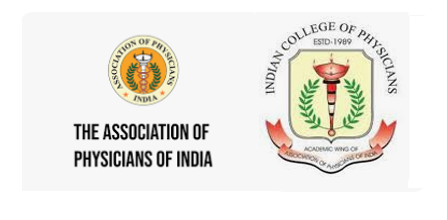• The guidelines advocate the integration of lifestyle modifications recommending yoga as an adjunct therapy to enhance outcomes
• Specific emphasis laid on using multiple methods to detect and measure hypertension, including at home blood pressure (BP) monitoring
• The guidelines recommend dual therapy, combining Angiotensin Receptor Blockers (ARBs) with newer Calcium Channel Blockers (CCBs) like Cilnidipine, to maximize benefit
August 5, 2024, National: The Association of Physicians of India (API) in collaboration with the Indian College of Physicians (ICP) have released the Guidelines on the Management of Hypertension in Indian Patients with Type 2 Diabetes Mellitus (T2DM). These guidelines address the pressing need for a detailed, region-specific protocol to manage the growing dual burden of hypertension and diabetes in India.
Hypertension and diabetes are among the leading lifestyle diseases in India, contributing significantly to morbidity and mortality. Studies indicate that over 50% of hypertensive patients in India are also diagnosed with T2DM, highlighting a significant overlap that poses unique challenges in patient care. The co-occurrence of these conditions amplifies the risk of cardiovascular complications and accelerates the progression of renal disease, making effective management strategies critical. Also, majority of these diseases are diagnosed and managed at the primary care level in India and thus there is a need for detailed guidelines charting out the entire management protocol, especially in Indian patients.
“While global guidelines provide a framework for managing hypertension in T2DM, the Indian and Southeast Asian populations differ significantly from Western populations in terms of ethnicity, clinical challenges, and drug responses. Recognizing this gap, the API and ICP have collaborated with leading physicians, cardiologists, diabetologists, and endocrinologists to develop a management protocol specifically for Indian patients. The guidelines emphasize the importance of early detection, comprehensive assessment, and a multi-faceted treatment approach” said Dr. Jyotirmoy Pal, President Elect (2025), API
Hypertension in individuals with T2DM greatly increases the risk of cardiovascular complications like heart disease, stroke, and peripheral artery disease. Assessing target organ damage and overall cardiovascular risk is essential to guide treatment intensity and preventive measures. Regular screening for microalbuminuria is recommended to identify those at risk of kidney dysfunction and future cardiovascular disease. Using specialized risk scores developed for individuals with diabetes is preferred over general population risk scores for more accurate cardiovascular risk assessment.
Given the high cardiovascular risk in T2DM, the guideline recommends a treatment of dual antihypertensive therapy, specifically combining Angiotensin Receptor Blockers (ARBs) with Calcium Channel Blockers (CCBs) for their effectiveness in reducing BP and safeguarding against cardiovascular complications.
A notable inclusion in the 2024 guidelines is the recommendation of newer CCBs, with a specific focus on Cilnidipine. Introduced in India in 2007, Cilnidipine has shown promise in offering multiple benefits, not just in reducing BP, but also in protecting crucial organs, especially the kidneys. The guidelines suggest combining Cilnidipine with ARBs to maximize these benefits, while also considering patient-specific factors and comorbidities.
Additionally, Renin-angiotensin system (RAS) blockers should be integral to the treatment regimen, given their proven efficacy in randomized controlled trials (RCTs) for preventing and slowing the progression of diabetic kidney complications. It also recommends use of Newer anti-diabetic agents like SGLT2 inhibitors and GLP-1 receptor to improve glycemic control as well as confer macro & micro- vascular protection.
The API-ICP also recommends conditions where the patients should be further referred to specialists for better management of the disease.
One of the key features of the new guidelines is the emphasis on using multiple methods to detect and measure hypertension, including home blood pressure (BP) monitoring. This approach empowers patients to take an active role in managing their condition, improving adherence to treatment and long-term outcomes.
In addition, the guidelines advocate for the integration of lifestyle modifications to enhance treatment outcomes. For the first time, the ancient Indian practice of yoga is recommended as an adjunct therapy for managing hypertension in T2DM. Doctors are advised to recommend Yoga’s holistic benefits to patients for overall health outcomes.
Healthcare practitioners across India and beyond are encouraged to adopt these guidelines to enhance patient care and ensure the effective management of hypertension in diabetic patients. The guidelines are now available for reference in the Journal of Association of Physicians of India (JAPI), providing a valuable resource for clinicians striving to deliver the highest standard of care.
Dr Jyotirmoy Pal President Elect.API
Org.Secretary & Scientific Chairman, APICON 2025
Disclaimer
The information contained in this website is for general information purposes only. The information is provided by TodayIndia.news and while we endeavour to keep the information up to date and correct, we make no representations or warranties of any kind, express or implied, about the completeness, accuracy, reliability, suitability or availability with respect to the website or the information, products, services, or related graphics contained on the website for any purpose. Any reliance you place on such information is therefore strictly at your own risk.
In no event will we be liable for any loss or damage including without limitation, indirect or consequential loss or damage, or any loss or damage whatsoever arising from loss of data or profits arising out of, or in connection with, the use of this website.
Through this website you are able to link to other websites which are not under the control of TodayIndia.news We have no control over the nature, content and availability of those sites. The inclusion of any links does not necessarily imply a recommendation or endorse the views expressed within them.
Every effort is made to keep the website up and running smoothly. However, TodayIndia.news takes no responsibility for, and will not be liable for, the website being temporarily unavailable due to technical issues beyond our control.
For any legal details or query please visit original source link given with news or click on Go to Source.
Our translation service aims to offer the most accurate translation possible and we rarely experience any issues with news post. However, as the translation is carried out by third part tool there is a possibility for error to cause the occasional inaccuracy. We therefore require you to accept this disclaimer before confirming any translation news with us.
If you are not willing to accept this disclaimer then we recommend reading news post in its original language.











